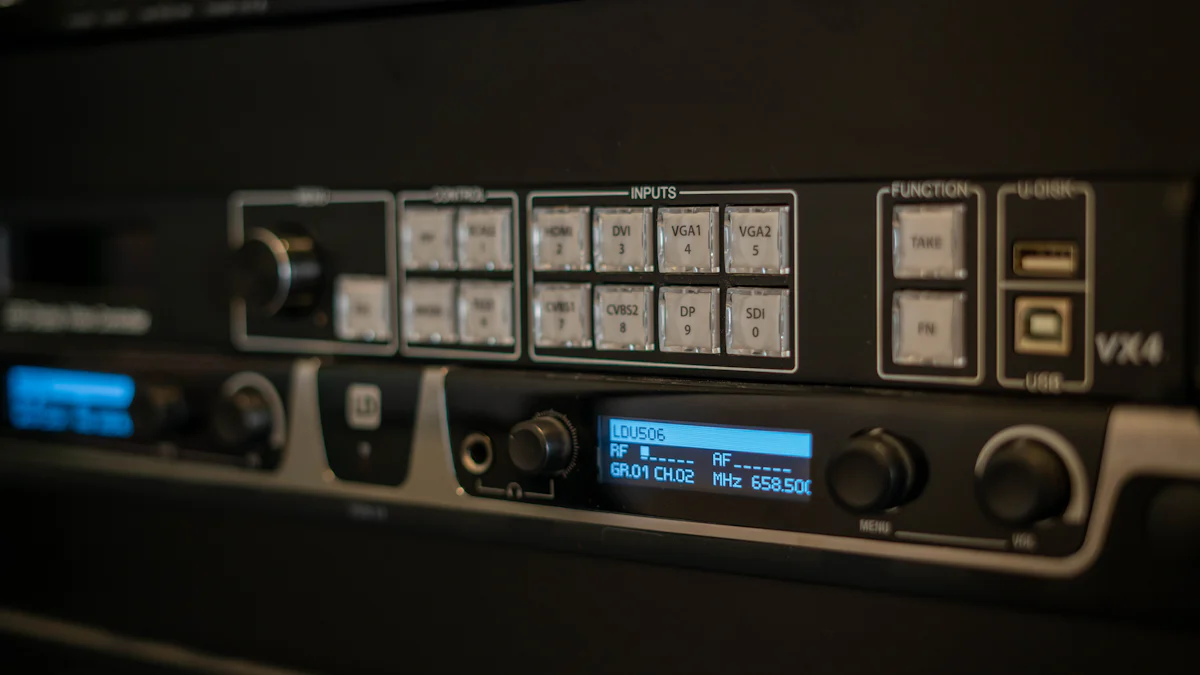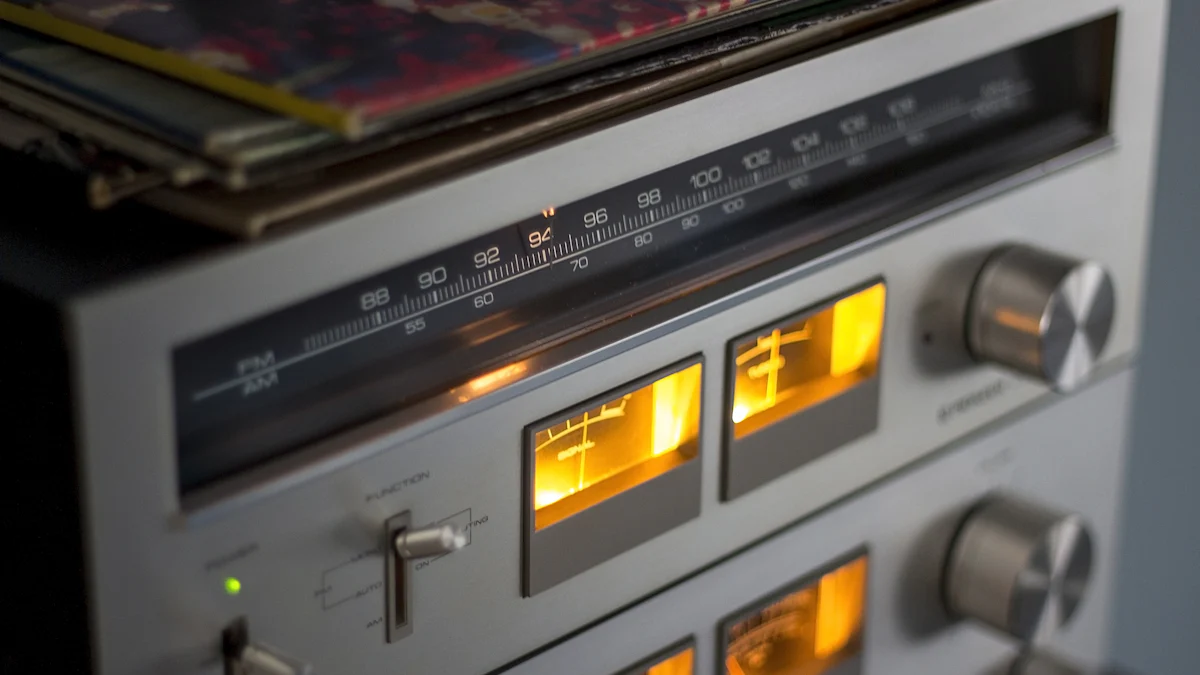Unlocking Superior Sound: A Deep Dive into Automotive Audio DSP Technologies and Applications

In-Depth Analysis of Automotive Audio DSP: From Core Technologies to Practical Applications for an Ultimate Listening Experience
As an engineer with years of experience in the automotive electronics field, I deeply understand how significantly a superior automotive sound system can enhance the driving experience. It is more than just a tool for playing music; it is key to creating the driving atmosphere and providing an immersive experience. At the heart of this system lies the Digital Signal Processor (DSP). Today, from my professional perspective, I will delve into the intricacies of automotive audio DSPs and share some practical experiences and insights to help you better understand and apply this technology.
DSP: The "Brain" of the Automotive Sound System

What is a DSP?
Definition and basic functions
A Digital Sound Processor (DSP) serves as the brain of modern car audio systems. It processes audio signals to enhance sound quality, ensuring that every note and beat reaches the listener with precision. DSPs perform tasks such as equalization, filtering, and signal delay, which are crucial for achieving optimal sound performance in car audio systems. By manipulating audio signals, DSPs can correct distortions and balance frequencies, providing a superior listening experience.
Historical development and evolution
The evolution of DSPs in car audio systems has been remarkable. Initially, car audio relied on analog systems, which had limitations in sound quality and customization. With the advent of digital technology, DSPs emerged, offering advanced capabilities. Over the years, DSPs have evolved from basic processors to sophisticated systems capable of real-time audio manipulation. This evolution has transformed car audio, allowing for studio-quality sound within the confines of a vehicle.
How DSPs Work in Automotive Systems
Signal processing techniques
DSPs employ various signal processing techniques to optimize audio output. These techniques include equalization, which adjusts the balance between frequency components, and filtering, which removes unwanted noise. DSPs also use signal delay to synchronize audio signals, ensuring that sound reaches the listener at the right time. By applying these techniques, DSPs can overcome the acoustic limitations of a car's interior, delivering clear and immersive sound.
Integration with vehicle audio systems
Integration of DSPs into vehicle audio systems enhances their functionality. DSPs work seamlessly with factory-installed audio components, allowing for precise control over sound settings. They can integrate with existing car systems, providing features like Bluetooth connectivity and wireless options. This integration ensures that DSPs can adapt to different car models and audio setups, offering flexibility and customization for users.
Benefits of Using DSPs in Cars
Enhanced sound quality
DSPs significantly enhance sound quality in car audio systems. They provide precise control over audio signals, allowing for fine-tuning of sound settings. This results in a balanced and immersive audio experience, with clear highs, rich mids, and deep bass. DSPs can also reduce noise and distortion, ensuring that every detail of the music is heard.
Customization and flexibility
One of the key benefits of DSPs is their ability to customize audio settings. Users can adjust sound parameters to suit their preferences, creating a personalized listening experience. DSPs offer flexibility in sound tuning, allowing for adjustments based on the type of music or the acoustics of the car interior. This customization ensures that users can enjoy their favorite music in the best possible way.
Key Components of Automotive Sound DSPs

The Digital Signal Processor (DSP) is the "brain" of the modern automotive sound system. Its primary responsibility is to process audio signals in real-time with precision, optimizing sound quality to ensure that every note and beat is delivered to the listener in the purest and most accurate way possible. This includes, but is not limited to, key tasks such as equalization, filtering, and delay calibration. Imagine the reflections, absorptions, and interference an untreated audio signal encounters within the complex acoustic environment of a car cabin. The DSP exists precisely to overcome these challenges.
Technical Details and Evolution:
Early automotive sound systems relied heavily on analog circuits, which greatly limited sound quality and customizability. With the rapid development of digital technology, DSPs emerged. Evolving from simple digital processing modules to today's sophisticated systems capable of complex real-time audio manipulation, the history of the DSP is essentially the evolution of automotive audio. For instance, chip series like Analog Devices' AD1940YSTZ, AD1941YST, and AD1941XST are outstanding representatives of this evolution. They are not only widely used in automotive audio but also play vital roles in multi-channel audio systems like digital TVs and home theaters, their powerful digital signal processing capabilities ensuring precise audio reproduction.
How DSPs Work and Integrate in Automotive Systems
DSPs optimize audio output through a series of precise signal processing techniques. Equalization allows us to adjust the balance of different frequency components to suit personal listening preferences or compensate for speaker response deficiencies. Filtering is responsible for removing unwanted noise and interference, ensuring sound purity. Signal Delay is particularly crucial in the automotive environment. It precisely adjusts the time it takes for sound from different speakers to reach the listener's ears, thereby creating a perfect soundstage and imaging within the cabin, as if seated in the "sweet spot" of a concert hall.
Real-World Application Case:
I once worked on a project where the client was very dissatisfied with the spatial sense and localization of the stock sound system. By introducing a high-performance DSP and utilizing its multi-channel independent delay and equalization functions, we made millisecond-level delay adjustments and fine-tuned the frequency response for each speaker. The result was a dramatic transformation: the previously blurry soundstage became clear and three-dimensional, with accurate positioning of vocals and instruments. The client was amazed by the significant improvement. This is a powerful demonstration of the DSP's ability to overcome acoustic shortcomings inside a vehicle.
Integration with Vehicle Sound Systems:
Modern DSPs can integrate seamlessly with factory sound systems. This means we can achieve a massive improvement in sound quality without changing the original head unit or most of the wiring. Many DSP products also support Bluetooth connectivity and wireless control, allowing users to make personalized settings via smartphone apps, greatly enhancing the user experience. This integration method preserves all the original vehicle's functions while unlocking greater potential for the sound system.
Key Features of an Exceptional Automotive DSP
Choosing a suitable automotive DSP requires attention to its core features.
Sound Quality Enhancement:
Precise Equalization and Tuning: Advanced DSPs offer multi-band or even fully parametric equalizers, allowing engineers or users to make precise adjustments to every frequency band of the audio. This is crucial for compensating for the deficiencies of the in-car acoustic environment and optimizing speaker performance. For example, boosting the response of certain frequencies can make the bass more impactful or vocals clearer. I typically use spectrum analyzers and professional tuning software, combined with critical listening, for repeated adjustments until the optimal result is achieved.
Noise Reduction and Cancellation: Road, wind, and engine noise generated during driving are the natural enemies of sound quality. High-performance DSPs use complex algorithms to effectively identify and suppress these background noises, ensuring music remains clear under any driving condition. This is particularly important for enhancing auditory comfort during long-distance drives.
Connectivity and Compatibility:
Bluetooth and Wireless Options: Beyond traditional wired connections, modern DSPs commonly support Bluetooth audio streaming for convenient wireless playback from phones. Some high-end DSPs also offer Wi-Fi connectivity for higher bitrate lossless audio transmission, meeting the demands of audiophiles.
Integration with Existing Car Systems: An excellent DSP should integrate easily into the vehicle's existing electrical architecture, whether via high-level inputs (taking signal from the factory amplifier output) or low-level inputs (taking signal from the factory head unit RCA outputs). Compatibility is a prerequisite for ensuring easy installation and system stability.
Engineer's Practical Advice: Selecting and Using a DSP
1. Assess Your Audio Needs:
Before selecting a DSP, first define your needs. Are you an audiophile seeking the ultimate sound quality, or do you want a noticeable improvement over the current system? What type of music do you listen to? Any specific preferences for bass, vocals, or treble? Are you planning to add a subwoofer or replace speakers? These factors will influence your choice regarding the DSP's processing power, number of channels, and feature complexity. For beginners, a 4-in/6-out or 6-in/8-out DSP might suffice; for a multi-channel active crossover system, an 8-in/12-out or even more channels might be necessary.
2. Compare Models and Brands:
The DSP market has numerous brands, from high-end ones like Audison, Helix, Mosconi, to various domestic brands, each with its strengths. Beyond focusing on the performance of core processing chips like the AD1940YSTZ, AD1941YST, AD1941XST, also research key parameters like the DSP's sampling rate, bit depth, Signal-to-Noise Ratio (SNR), and Total Harmonic Distortion (THD). Simultaneously, the usability of the software interface, the richness of tuning functions, and community support are also important considerations. Personally, I prefer DSPs that offer intuitive tuning software with extensive parameter adjustment options, as this allows greater flexibility during tuning.
3. Installation and Setup Tips:
Professional Installation vs. DIY: If you lack solid knowledge of automotive electronics and audio modification experience, I strongly recommend seeking professional installation. A qualified installer ensures the DSP is correctly wired and operates stably, while also preventing electrical faults caused by wiring issues. A professional tuner can unlock the DSP's full potential. Of course, if you are a hands-on enthusiast, you can attempt DIY, but be sure to read the manual thoroughly and prepare adequately.
Calibration and Optimization: Calibration is a crucial step after DSP installation. This typically requires professional test equipment (like an RTA real-time spectrum analyzer) and software. Start with phase and delay calibration to ensure all speaker sounds arrive synchronously at the listening position. Then perform frequency response calibration, using the equalizer to correct frequency deviations caused by the car's acoustics, aiming for a flatter response curve. Finally, perform fine-tuning based on personal preference, saving different presets for various music genres or driving scenarios. Remember, DSP firmware updates often bring performance optimizations and new features; regularly checking for and installing updates is a good habit.
Conclusion: Driving Enjoyment Beyond Hearing
An automotive audio DSP is more than just a tool for improving sound quality; it is an enhancement of the entire driving experience. As an engineer, I have witnessed numerous miracles where a DSP transformed a mediocre sound system into something exceptional. It fills every commute and journey with the charm of music, allowing the driver to truly immerse themselves in a high-quality auditory feast. If you crave the ultimate listening experience in your car, then investing in an excellent DSP and having it professionally installed and tuned is undoubtedly a worthwhile choice. It will open the door to a whole new world of automotive audio for you.
References:
[1] Crutchfield. (n.d.). Car Audio DSPs: What they are and why you need one. Retrieved from https://www.crutchfield.com/learn/car-audio-dsps.html
[2] Analog Devices. (n.d.). AD1940YSTZ, AD1941YST, AD1941XST for Automotive sound systems, Audio DSPs. Retrieved from https://www.analog.com/en/products/ad1940ystz.html
See Also
Simple Guide for Integrating Sensors with SN74LVC4245APW
Detailed Tutorial on Using AD620AN for TV Power
The Secret to Sustaining Excellence with Booming Technology in Electronics
Revolutionizing Industrial Automation with XCF01SVOG20C: 3 Key Methods
CALL US DIRECTLY
(+86)755-82724686
RM2508,BlockA,JiaheHuaqiangBuilding,ShenNanMiddleRd,Futian District,Shenzhen,518031,CN
www.keepboomingtech.com sales@keepboomingtech.com
